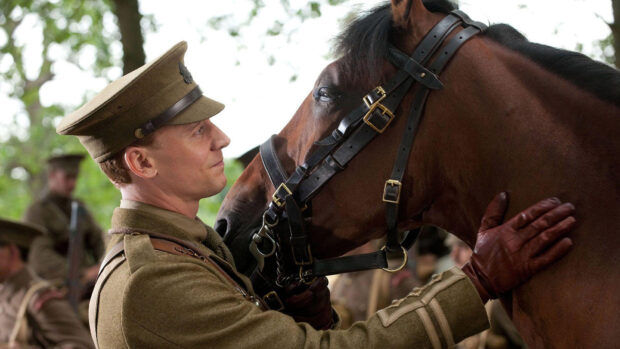Canine expert John Woods has put together his top tips to help make the process as stress-free as possible, for you, your dog and the horse
Whether you are a seasoned horse owner, or you find yourself meeting horse riders during walks in the countryside, the way you introduce a dog to a horse will be key to whether this is a positive experience for all concerned, or not. It is possible for most dogs to live in harmony with horses, or at least just pay little attention to them when out on walks. Here, canine expert John Woods has put together his top tips to help make introducing a dog to a horse as stress-free as possible.
What is desensitisation?
When introducing our faithful friend to any livestock, including horses, we use a process called desensitisation. This is where, through graded exposure, their response is diminished. In short, when we control how they interact with the livestock, we ultimately control their response too.
Start at a distance
With the horse secured in a field, stand with your dog at a distance (where he cannot get to the horse) far enough away that he doesn’t even notice the horse. Keep him on a lead. Ask him to sit if you want to. Praise and reward him to keep his attention. You are rewarding his lack of response to the horse. Providing he is calm, move a little closer to the horse while remaining outside the paddock. As long as he remains calm, praise and reward him. Gradually decrease the distance between you, your dog and the horse. Praise and reward for as long as he remains calm.
Horses can be intimidating
Unlike other livestock, for example chickens, horses are fairly large! For most dogs, they are a great deal bigger in size. This can be intimidating for a dog. Even if they are used to other animals, it’s unlikely they have come across something of this size before. When your dog notices the horse, they may become fearful.
Watch their body language — a fearful or anxious dog can react in a few different ways. Ultimately, it is a stress response, so they may choose to fight, flight or freeze. They may become aggressive; snarling or lungeing. Their hackles may come up on their neck or along their back and they may bark. Alternatively, they may cower or try to run away. Expect the unexpected and keep a hold of your dog’s lead. They may just stand there and stare.
In any of these situations you need to remove them to a safe distance to let them calm down. This may mean going back to square one. Your dog needs to learn that the horse poses no threat and actually good things happen when he stays calm (praise and reward).
Move closer
The aim is to get your dog to the fence around the field the horse is in without reacting to the horse. He may sniff or show interest (looking, watching etc), but overall, he remains calm and quiet. At this stage, if your dog has good recall established, you may let him off his lead so he can explore the area without entering the field.
Once you are confident your dog shows little to no interest in the horse with a barrier between them, you can make the leap to introducing them directly. This could take days, weeks or even months.
NB: If you are not a horse owner, or have the permission of an owner who has a horse that is well behaved with dogs that you can use for training purposes with them in attendance, then you should not attempt to introduce your dog directly to the horse. Allowing a dog to interact with a loose horse in a field without the landowner and horse owners’ permission is dangerous for horse, dog and human and could be trespass.
Use a lead
Keep your dog on a lead and walk towards the horse, which should be being controlled by its owner. Keep treats handy to distract your dog from the horse, keeping his attention on you. Be mindful of the horse and the advice of its owner — some horses aren’t that interested, some may want to sniff the dog. If the horse is getting stressed, which could cause it to kick out, remove yourself and your dog from the situation and try again another day. Praise and reward your dog for remaining calm. You want him to be totally indifferent to the horse. You may make the leap of letting your dog off the lead around the horse, but you need to be confident that he will remain calm and the horse will tolerate a dog in its space. His recall also needs to be fail-safe – here are some tips on how to teach your dog recall.
Summary
In a nutshell, having horses and dogs living harmoniously is possible, you just need to be patient. Introduce from a distance and encourage a calm response. Praise and reward is paramount. The idea is to desensitise your dog through gradual exposure. Move closer until you are where your dog will spend most of his time around horses, without any negative reaction. Be patient and don’t be disheartened if you ever need to go back to square one — it’ll be worth the hard work!
You may also be interested to read…

No more tug of war: 6 of the best anti-pull harnesses for dogs

How to master recall

Signs, causes and coping strategies for reactivity in dogs – explained by an expert

Subscribe to Horse & Hound magazine today – and enjoy unlimited website access all year round
Horse & Hound magazine, out every Thursday, is packed with all the latest news and reports, as well as interviews, specials, nostalgia, vet and training advice. Find how you can enjoy the magazine delivered to your door every week, plus options to upgrade your subscription to access our online service that brings you breaking news and reports as well as other benefits.




